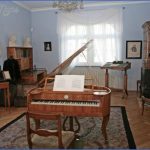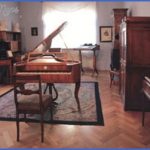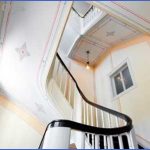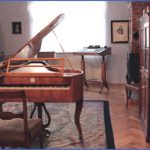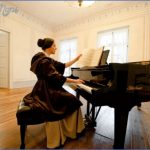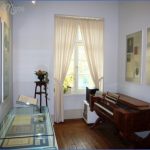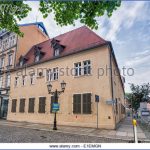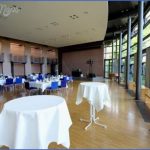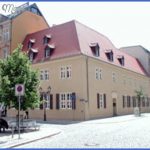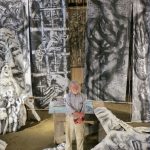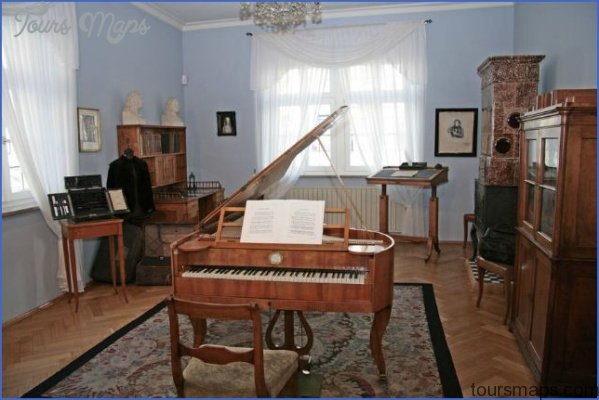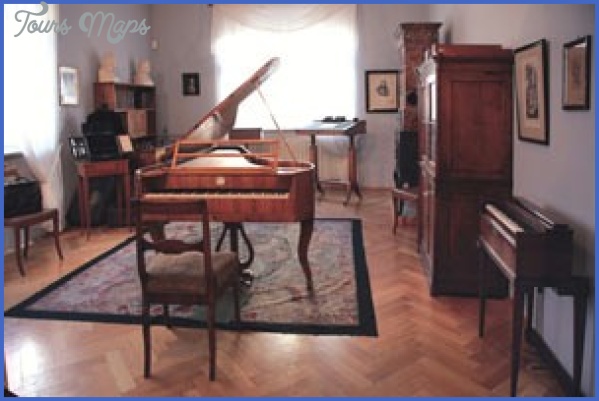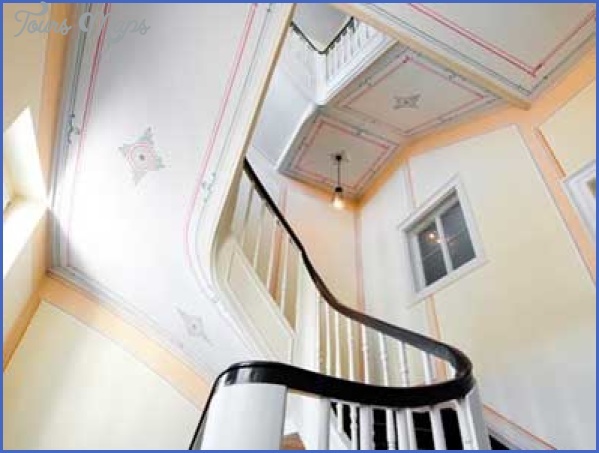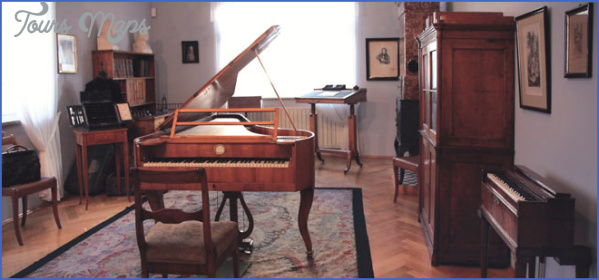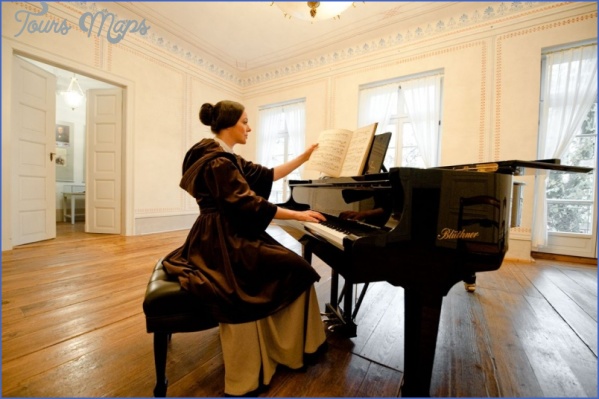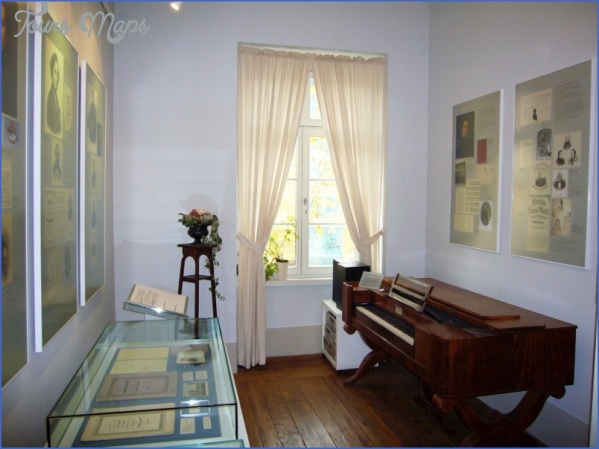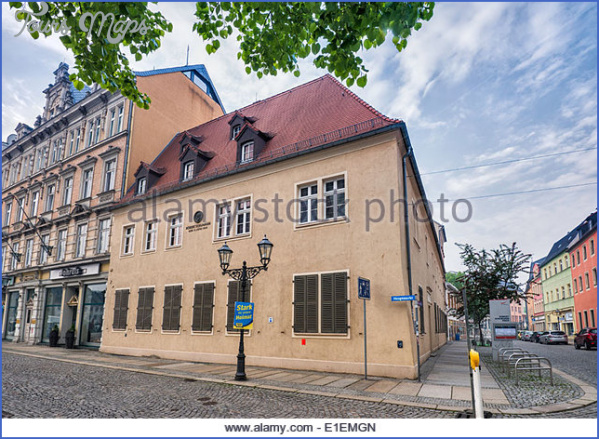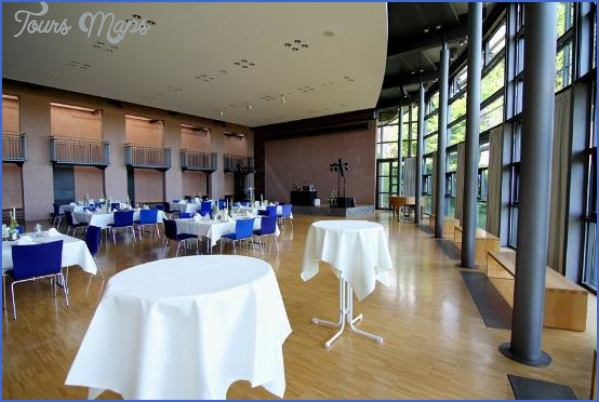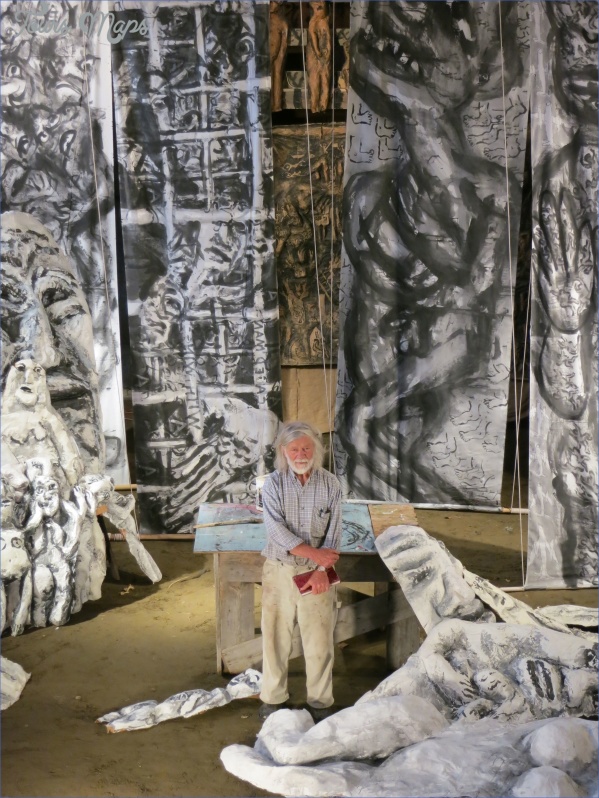SCHUMANN MUSEUM
The Schumann family had lived for generations in Zwickau, a Saxon town south of Leipzig, not far from the German-Czech border, when Robert was born on 8 June 1810. His birthplace and childhood home still stands, on a corner of the central marketplace, now part of a spacious, partly pedestrianized area. His father, a prosperous publisher and bookseller, was a keen music lover, not a practitioner, but recognized his son’s gift and nurtured it, buying him music, organizing expeditions beyond Zwickau to concerts and, in due course, acquiring for him a Streicher grand piano.
The family house, which dates back to around 1450, became a museum in 1910. Its interior was rebuilt in 1955-6, in time for the commemoration of the centenary of Schumann’s death. Since 1960, the 150-seat chamber music hall on the ground floor has played host to the International Schumann Contest for Pianists and Singers. Apart from a space opposite the entrance used for special exhibitions, the museum is upstairs; its collection is Schumann’s birthplace in Zwickau unusually comprehensive and rich in primary documents and artefacts.
The first-floor landing has exhibits devoted mainly to the role played by Zwickau in commemorating its most famous son, but there is also a bust of Clara, of 1885, and a set of her edition of her husband’s works. The first room chronicles Schumann’s early years in Zwickau, from portraits of his parents and his baptismal entry through his childhood autobiographical writings and his youthful attempts at composition to his school graduation certificate and the elegant bookcase his father then gave him; there is also a picture of the Schumann family’s later home, from 1817, in Marktgasschen, which was destroyed in World War II. The next room covers his student years in Leipzig and Heidelberg and the beginnings of his career as a composer and critic in the 1830s; Chopin and Liszt, Clara Wieck and Ernestine von Fricken (his earlier fiancee) are here, along with compositions and writings of the time and an 1840 square piano.
SCHUMANN MUSEUM Photo Gallery
The third room focusses on his marriage and the outpouring of song and then orchestral music in the ensuing months. There is an 1840 watercolour of Clara, once owned by Brahms. The early 1840s, when the Schumanns were in Leipzig, with Schumann’s turn to chamber music and their 1844 visit to Russia – commemorated by Schumann’s own pen-and-ink drawing of the
Kremlin, among much else – are the central theme of Room 4; Room 5 covers the Dresden period from 1844, the production of his opera Genoveva and many concert tours. In the next room his last years, in Dusseldorf and Endenich, are recorded – there are contemporary photographs of Joachim and Brahms, copies of many of the late works, Schumann’s briefcase and walking-stick, his will, his last music autograph and his death certificate. Clara’s life afterwards is commemorated there and further in the seventh room and in the final, corner room (in the position of the one in which Schumann was born); these rooms are devoted to her career as pianist, composer, wife and mother: her letters, manuscripts, editions of her music, programmes, the piano by M.A. Stein on which she made her debut, a bust, a cast of her right hand and portraits of her and their children (see also Brahms). A few of her and Robert’s personal possessions are preserved: a chess set, dominoes, candlesticks, some china, coffee spoons. There too are Robert’s standing desk, his bookcase, his desk and armchair, his own copies of the Neue Zeitschrift fur Musik, his busts of Bach and Handel, his copy of the Bach collected edition, the stove from the Marktgasschen house. The museum archives on the second floor contain a rich store of further artefacts, including Robert’s and Clara’s detailed marriage diaries and household books. Robert Schumann had first met Clara Wieck in Leipzig when she was eight years old (she was born in 1819) and he was a pupil of her father, Friedrich; they married in 1840, on the eve of her 21st birthday. For a short time (1830-31) Robert had lodged at the Wiecks’ house at Grimmaische Gasse 36 in the centre of the city, an established meeting place for Leipzig musicians, where Schumann first met Mendelssohn. Of Schumann’s several residences in Leipzig during his 16 years in the city, one, in InselstraSe (then a new, artistic quarter to the east of the city centre), has become a museum. This is where he and Clara lived in the first years of their marriage, from 1840 until they moved to Dresden four years later. The building in InselstraSe, then 5, now 18, is a large, three-storey, late classicist block, in which the Schumanns were the first occupants of a flat on the first floor. It is uncertain just how many or which rooms this comprised, but it seems more than probable that it would have included the large central room at the front, as they are known to have given small concerts there. The ground floor and part of the first are now an independent primary school and a specialist music school (the Freie Grundschule Clara Schumann and the Musikschule Clara Schumann). The remainder of the floor is given over to one classroom, staff facilities, cloakrooms, the school doctor’s surgery and vestibules. During the restoration of the building it was discovered that some of the original wall-covering designs had survived, and when the museum opened in 2001 discussion was continuing on the issue of how these were best treated – fragmentarily preserved or more fully reproduced – so as to execute the intention of ‘mirroring the kind of lifestyle preferred by the two artists themselves’. These were happy and creative years for the Schumanns, when he was composing songs, orchestral works and chamber music, and she was developing her concert career; they entertained extensively in the flat – Mendelssohn (a near neighbour: see Mendelssohn), Berlioz,
Liszt and Wagner, along with Ole Bull, Marschner, Spohr and numerous others are known to have visited them there.
The main room, which seats 60, is used primarily for music-making. Adjoining it are smaller rooms, one at each end, fitted with elegant and informative board displays, based on the Schumann diaries, and showcases with contemporary documents (handbills, letters, visiting cards, relevant in particular to the years of the Schumanns’ occupancy). There is a piano of 1860 by Clara’s uncle, M.W. Wieck, and a square piano of about 1825 supplied by Friedrich Wieck.
In a suburb of Bonn, there is a further small museum dedicated to the memory of Schumann. This is at Endenich, in the building that was formerly the asylum where he sought treatment in March 1854 from a psychologist, Dr Richarz, after attempting to drown himself in the Rhine. The City of Bonn acquired the building in 1904 and in 1926 a memorial plaque was unveiled. It continued to be used as an asylum until the end of World War II, although it suffered bomb damage. After surviving the threat of demolition – in the centenary year of Schumann’s death there – the building was restored in 1963, with funds raised by a 150th birthday concert in 1960, and it now serves jointly as a branch of the Bonn Public Music Library and the Schumann Memorial Rooms. Until 1971 it also housed the Max-Reger-Institut. The Schumann collection at Endenich includes letters, newspaper clippings, photographs, a lock of hair and laurel
The former asylum at Endenich, now a music library with a Schumann museum leaves, and the original headstone from his grave (provided by Brahms in 1857). Schumann spent his last two-and-a-half tormented years in Endenich, deprived, on the orders of his doctor, of visits from his wife and children and friends. His son Felix was born to Clara three months after his committal. Clara and Brahms were allowed to visit him only at the end; Robert Schumann died at Endenich on 29 July 1856. Robert and Clara were reunited after her death in Frankfurt on 20 May 1896: they are buried in Bonn, side by side, in the Alter Friedhof, their graves marked by a memorial sculpture by Adolf von Donndorf, erected in 1880 with money raised from concerts of Schumann’s music; at the foot of the monument, Clara sits in the centre, flanked by putti and gazing up lovingly at the profile relief of Robert (which is supported by a flying swan), offering him with one hand the wreath of immortality while in the other holding a scroll. In 1906 the first Schumann exhibition was held in Bonn in the Beethoven-Haus Robert and Clara Schumann’s graves in Bonn (which was by then a museum), giving rise to thoughts in the minds of the surviving Schumann daughters, Marie and Eugenie, of establishing a permanent collection. Although most of the remaining legacy ultimately went to Zwickau, Eugenie donated to Bonn the manuscript on which Schumann notated the theme he believed had been sung to him by angels during the night of 17 February 1854, ten days before his attempted suicide; the Beethoven-Haus Archiv also owns Robert’s last letter to Clara, written on 5 May 1855.
Maybe You Like Them Too
- Explore East Lindfield, Australia with this detailed map
- Explore Bonferraro, Italy with this detailed map
- Explore Doncaster, United Kingdom with this detailed map
- Explore Arroyito, Argentina with this Detailed Map
- Explore Belin, Romania with this detailed map

